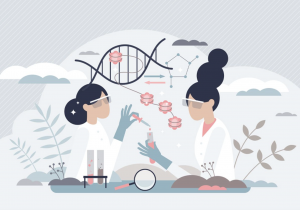Most Vegas locals have probably visited Hoover Dam at some point in their lives. Me? I’ve been there too many times to count, often because relatives or friends were visiting. But that’s besides the point. Today, we’ll be focusing on the lake formed by Hoover Dam, Lake Mead. While it seems relatively empty of life, an important species lies beneath the lake’s surface: quagga mussels.
Now anyone who’s seen a mussel likely thinks they’re just harmless clam-like creatures. At Lake Mead, however, these quagga mussels are an invasive species. For context, an invasive species is an organism not native to the particular area it inhabits and has few or no natural predators. Not only are quagga mussels not native to Lake Mead, but they’re not even native to North America! They are thought to be initially introduced in 1986 “through ballast water discharged from ongoing ships” [1] and later spread throughout the Great Lakes and Mississippi River Basin states. And I guess, eventually, they made their way down to Lake Mead.
Though reading this may be a tad boring, it’s important to realize that the presence of this species is harming our local environment and equipment. Only those who are aware can contribute to causes and attempt to find solutions to problems. So, why are these mussels harmful? Shells of dead mussels are hazardous to those of us on beaches, and people who enjoy boating at Lake Mead? Well, larval mussels get drawn into boat engines and bilges, eventually growing into adults and clogging recreational equipment. In addition to these impacts on us, large colonies of quagga mussels have tremendous filtering capacities for consuming plankton, which can deprive other aquatic species of necessary resources.
So what can we do?
The National Park Service emphasizes to those who boat at Lake Mead to thoroughly clean their boats and equipment every time they leave the water [2]. This will ensure that quagga mussels are not clinging on anywhere and you are not responsible for transporting them elsewhere. And if you’re not feeling up to this laborious task, contact a Lake Mead marina to get a boat wash!
Remember, next time you visit Hoover Dam and are out on Lake Mead, watch out for quagga mussels!
To learn more about the mussels and what’s being done to address the environmental issues, check out the sites below:
[1] National Park Service. (n.d.). Quagga Mussel. Retrieved from https://www.nps.gov/lake/learn/quagga-mussel.htm
[2] National Park Service. (n.d.). Quagga Mussels. Retrieved from https://www.nps.gov/lake/learn/nature/quaggamussels.htm
Image Credit: https://www.nps.gov/lake/learn/nature/quaggamussels.htm






Comments are closed.